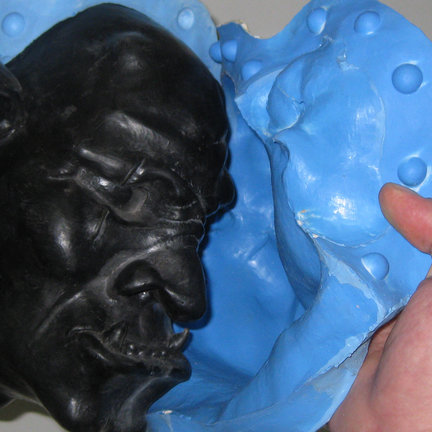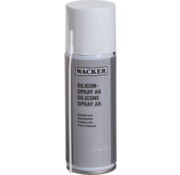Release agents for the mould or the original item
Release agents facilitate the release of a mold from the original, or the release from a casting from the mold. They can also protect the mold and the original.
Polyvinyl Alcohol Release agent (PVA)
€ 4,95 € 4,09 Excl. tax
✔ Provides a protective layer against poisoning from addition-hardening silicone
Compare
✔ Easy to process
✔ Soluble in waterRelease Agent Spray 0.82 g / cm³ Achem SG-1008S,
€ 17,50 € 14,46 Excl. tax
✔ Release spray for silicone
Compare
✔ Provides a good release
✔ Matting
✔ Wax-based
✔ 0.75 g / cm³Release Agent Spray, wax-based, 0,75g/cm³
€ 17,50 € 14,46 Excl. tax
✔ Release spray for silicone
Compare
✔ Provides a good release
✔ Matting
✔ Wax-based
✔ 0.75 g / cm³Talcum Powder Finntalc M-30-sq
€ 2,50 € 2,07 Excl. tax
The powder is ideal to eliminate the non-slipping character of silicone, but can also be used for a fine discharge between two layers of addition silicones.
CompareRelease Agent Wax TR-108
€ 26,50 € 21,90 Excl. tax
This release agent is a wax to facilitte the de-moulding of the silicone mold from the original and to release casts from the silicone mold.
CompareChemlease® 15 Sealer EZ
€ 324,- € 267,77 Excl. tax
✔ Reduces porosity problems.
Compare
✔ Provides a good base coat for all types of release agents.
✔ Compatible with fiberglass, aluminum, steel and most solid or dense surfaces
✔ Shortens the application time
✔ Lasting Stability at High TemperaWACKER® SPRAY AK 200 ML
€ 10,95 € 9,05 Excl. tax
✔ Transparent, water-repellent silicone layer.
Compare
✔ High separation and lubricating effect.
✔ Resistant to temperatures from -40 to +200 °C.
✔ Safe to use (BGVV approval).
✔ Odourless and CFC-free.
✔ Economical in use.
✔ FlashSRA 6200
€ 8,69 € 7,18 Excl. tax
✔ Silicone-based release agent
Compare
✔ Very effective, universal release agent
✔ For most waxes, plastics and rubber forming purposes
✔ 400 ml.Chemlease Mold Cleaner EZ
€ 29,95 € 24,75 Excl. tax
Chemlease® Mold Cleaner EZ is a special blend of solvents designed to dissolve and remove wax and dirt from composite molds.
Compare

Release agents facilitate the release of a silicone mould or original from a mould.
Normally silicones do not bound to most surfaces. However they tend to mechanically bond to porous surfaces like unfinished wood, or baked clay. In this case we advise to use a release agent and / or a pore filler.
Condensation curing silicones chemically bond to all silicones. Therefore you need to use a release agent when you pour fresh condensation curing silicones in a silicone mould.
Addition curing silicones only adhere to addition curing silicones that are not fully crosslinked. However it is hard to predict when this will be the case. Therefore we advise to use a release agent when pouring addition curing silicones in an addition curing mould.
On a highly absorbent surface, poly vinyl alcohol can be tried as a release agent. Especially because this can be dissolved with a lot of water and therefore leaves less to no discolouration. This is applied to, for example, marlstone.
Polyurethane, epoxy and polyester adhere strongly to many materials except silicone. For a better release, we therefore always recommend a release agent. This can also somewhat protect the silicone mold.
The nature of the release agent determines whether the shape retains its gloss or not. A good choice is therefore important here. Polishable or wax-containing release agents can often be waxed back to shine. Powder-containing release agents give a mattifying effect.










